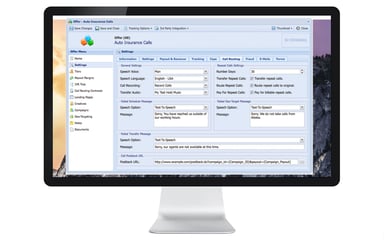Medical Lead Generation Compliance Guide
Regulatory Overview of Health Insurance and Healthcare Marketing
*Legal Disclaimer: This article provides informational guidance and should not be considered legal or medical advice. Always consult qualified legal and compliance professionals regarding your specific obligations.*
Healthcare marketing has become exceedingly complex. Lead generation must balance business growth with strict regulatory compliance. This guide explores medical lead generation across different healthcare sectors, helping marketers and agencies navigate regulations while building successful marketing programs.
Understanding Medical Lead Generation
At its core, medical lead generation identifies and connects with potential customers seeking health-related services, from insurance coverage to medical procedures. What sets it apart from traditional lead generation is the stringent regulatory framework that governs healthcare marketing.
Private Health Insurance: Building Trust Through Compliance
Multiple regulatory frameworks shape how private health insurance generates and handles leads. The Telephone Consumer Protection Act (TCPA) remains a cornerstone of compliance, requiring explicit written consent for automated communications. However, compliance goes beyond just checking boxes.
Successful private insurance lead generation programs typically embrace a "transparency-first" approach. This means creating a comprehensive data handling framework that respects both CCPA and GDPR privacy standards. Successful organizations view compliance not as a burden but as a trust-building opportunity with potential clients.
ACA Marketplace: Navigating Federal Guidelines
The Affordable Care Act marketplace presents unique challenges for medical lead generation compliance. Consumer protection stands at the forefront of CMS regulations, requiring documented consent before accessing or modifying personal information. The 10-year record-keeping requirement for consent documentation underscores the importance of robust data management systems.
Successful ACA lead generation is distinguished by its focus on education and acquisition. The most effective programs help consumers understand their options while maintaining meticulous compliance records, creating a dual benefit of informed customers and regulatory adherence.
Medicare Lead Generation: Understanding One-to-One Consent
In October 2024, CMS implemented strict one-to-one consent requirements for Medicare leads, making the market one of the most regulated in the country.
There are explicit rules for Third-Party Marketing Organizations (TPMOs). Before transferring leads between organizations, individual consent must be obtained. In the case of web leads, this means written, documented consent.
Verbal consent is permitted for live transfer leads if the call is recorded. Live transfers require a recording of the beneficiary agreeing to speak with a specifically named TPMO.
This regulatory framework requires sophisticated lead management systems and careful attention to documentation. Organizations must balance efficient lead processing with rigorous consent tracking to avoid potentially severe penalties.
Learn more about CMS and TPMO regulations at https://www.cms.gov/
Medical Tourism: Global Compliance in a Borderless Market
Medical tourism lead generation faces unique challenges in reconciling different international regulatory frameworks. To be successful in medical tourism lead gen requires understanding HIPAA, GDPR, and local healthcare marketing regulations in destination countries.
Effective medical tourism lead-generation programs typically focus on building credibility through:
- Clear documentation of hospital accreditation
- Transparent pricing structures
- Verified patient testimonials
- Realistic expectations about procedures and recovery
HIPAA Compliance and Healthcare Lead Generation
HIPAA (Health Insurance Portability and Accountability Act) is a federal law that protects sensitive patient health information from unauthorized disclosure and establishes national standards for data privacy and security in the healthcare industry.
HIPAA compliance fundamentally shapes how healthcare leads can be generated, stored, and transferred. Understanding the difference between Protected Health Information (PHI) and non-PHI data is essential for deciding how to handle leads.
- Non-PHI: Name, phone number, email (Standard sales lead)
- PHI: Medical history, provider details (Requires HIPAA compliance)
When working with healthcare leads, organizations must carefully categorize their data:
Insurance leads with only contact information, like name, phone, and email, do not fall under HIPAA rules. They can be treated like regular sales leads.
Once medical information is involved, HIPAA compliance is required. This includes provider referrals and patient records. Businesses must have Business Associate Agreements and stronger security measures.
Learn more about HIPAA-Safe Lead Generation
Building a Sustainable Lead Generation Program
The key to sustainable medical lead generation is to create systems that embrace compliance as a competitive advantage. This means:
1. Investing in robust data management systems that can track consent and maintain required documentation
2. Training staff thoroughly on compliance requirements and best practices
3. Regularly auditing lead generation processes to ensure ongoing compliance
4. Building relationships with compliance experts who can provide guidance on complex cases
Looking Ahead
As healthcare marketing evolves, lead-generation programs that adapt to changing regulations while maintaining efficient operations will succeed. The focus should be on building trust. Success will result from transparency, rigorous compliance, and ethical marketing practices that create client value.
These guidelines will help organizations build successful medical lead-generation programs that serve their business goals while protecting consumer interests and maintaining regulatory compliance.





